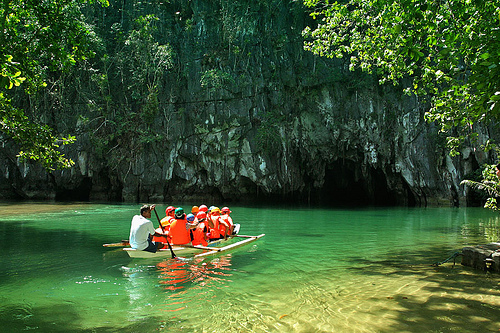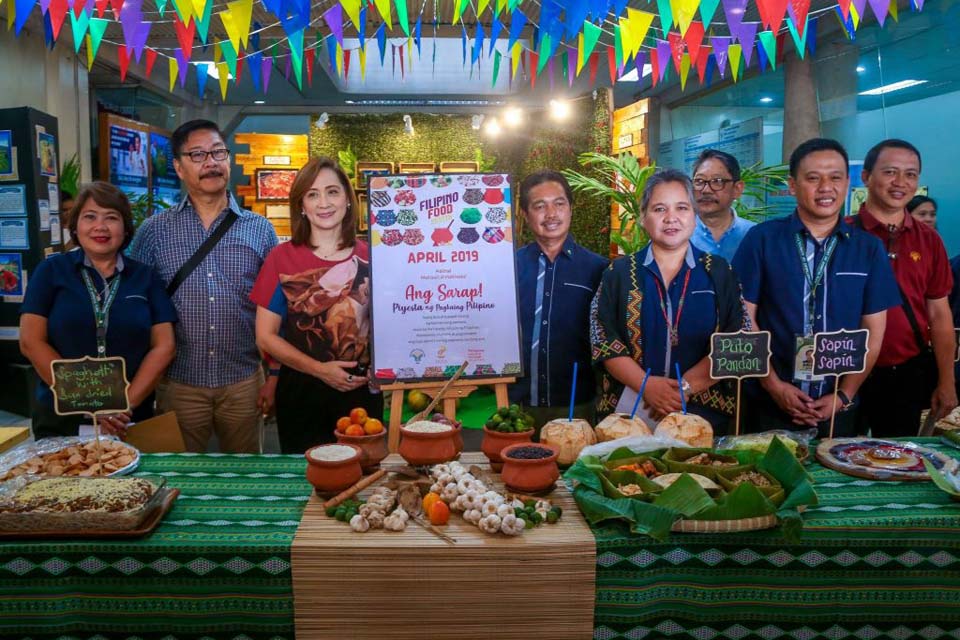Green tourism practices in the Philippines include eco-friendly accommodations, wildlife conservation, sustainable transportation, and community engagement for responsible tourism.

Eco-friendly Accommodations
Eco-friendly accommodations are a growing trend in the Philippines, as both tourists and businesses become more environmentally conscious. These lodgings focus on sustainability, employing practices that minimize their carbon footprint, conserve resources, and actively participate in local environmental initiatives.
Green-certified Hotels and Resorts
Green-certified hotels and resorts have met specific standards set by eco-certification bodies, ensuring that their operations respect and protect the environment. These establishments prioritize:
- Energy Efficiency: Utilizing solar panels, LED lighting, and other renewable energy sources.
- Water Conservation: Implementing systems like greywater recycling and rainwater harvesting.
- Sustainable Sourcing: Using locally-sourced, organic materials for food and amenities.
- Guest Education: Providing guests with information about sustainability and how they can contribute during their stay.
Some notable green-certified hotels in the Philippines include the El Nido Resorts in Palawan and the Nay Palad Hideaway in Siargao.
Homestays and Community-based Lodging
Homestays and community-based lodgings offer tourists a chance to live with local families and immerse themselves in the local culture. These accommodations often come with several eco-friendly advantages:
- Reduced Carbon Footprint: Since these are existing homes, no additional infrastructure is needed.
- Local Sourcing: Meals are usually prepared using local ingredients, reducing transportation emissions.
- Cultural Exchange: Tourists learn eco-friendly practices from their host families, enhancing cultural understanding and respect for the environment.
Visiting places like the Banaue Rice Terraces often gives tourists the opportunity to experience these types of lodgings.
Environmentally Conscious Architecture and Design
The Philippines, with its rich cultural and environmental heritage, has a unique opportunity to integrate traditional architectural techniques with modern eco-friendly designs.
- Natural Materials: Utilizing bamboo, cogon grass, and nipa palm which are abundant, renewable, and biodegradable.
- Passive Cooling: Designing structures that allow natural airflow, reducing the need for air conditioning.
- Green Roofs and Walls: Incorporating vegetation into building design to mitigate heat and promote biodiversity.
Sustainable Transportation Methods
Sustainable transportation plays a vital role in reducing the environmental impact of travel. As the Philippines becomes an increasingly popular tourist destination, efforts to promote eco-friendly transit methods are crucial for preserving its natural beauty and reducing carbon emissions.
Promoting Non-motorized Transport (e.g., Biking, Walking)
Non-motorized transport, especially biking and walking, offers numerous benefits:
- Low Environmental Impact: Zero emissions and no need for fuel.
- Health Benefits: Provides physical exercise and reduces the risk of various diseases.
- Economic Benefits: Less maintenance cost and no fuel expenses.
Cities like Iloilo have started creating bike-friendly infrastructures, encouraging locals and tourists to embrace cycling as a primary mode of transportation.
Green Vehicle Initiatives
Green vehicle initiatives emphasize the use of vehicles with minimal environmental impact. These initiatives include:
- Electric Vehicles (EVs): EVs run on electricity, emitting zero tailpipe pollutants. Several cities are now introducing electric jeepneys and tricycles.
- Hybrid Vehicles: Combining conventional engines with electric motors, hybrids offer better fuel efficiency and reduced emissions.
- Fuel Alternatives: Exploring options beyond fossil fuels, such as biofuels sourced from plants like the Jatropha.
The Philippines is progressively recognizing the importance of these initiatives and implementing them in various regions.
Carpooling and Shared Transportation
Shared transportation methods, including carpooling, reduce the number of vehicles on the road, leading to decreased traffic congestion and pollution.
- Ride-sharing Apps: Platforms like Grab allow users to share rides with others going in the same direction.
- Carpooling Lanes: Designated road lanes for vehicles with multiple passengers to promote carpooling.
- Vanpool Services: Larger vehicles transporting multiple passengers, popular for longer distances or commuting between cities.
Nature and Wildlife Conservation
The Philippines, an archipelago brimming with biodiversity, holds the distinction of being one of the world’s mega-diverse countries. Nature and wildlife conservation, therefore, are not just necessary for ecological balance but also crucial for preserving the nation’s rich natural heritage for future generations.
Marine Protected Areas and Diving Sanctuaries
The Philippines is home to a significant portion of the world’s coral reefs, making marine conservation of paramount importance. Marine Protected Areas (MPAs) and diving sanctuaries are established to:
- Preserve Marine Biodiversity: Protecting endangered species like the Philippine eagle ray and various coral species.
- Support Fisheries Management: Ensuring that fish populations remain healthy and can support local communities.
- Boost Eco-tourism: Diving sanctuaries attract divers from around the globe. Places like Tubbataha Reefs Natural Park have become world-renowned diving spots due to their pristine marine ecosystems.
Wildlife Sanctuaries and Conservation Projects
The diverse landscapes of the Philippines, from mountain ranges to rainforests, house a vast array of wildlife. These sanctuaries and projects aim to:
- Protect Endangered Species: Such as the Philippine tarsier and the Philippine eagle.
- Preserve Habitats: Ensuring that ecosystems remain intact and can sustain their resident species.
- Educate the Public: Awareness campaigns and eco-tours that highlight the importance of wildlife conservation.
Conservation projects like the Philippine Eagle Foundation are at the forefront of these efforts.
Reforestation and Mangrove Restoration Efforts
Forests and mangroves play vital roles in the environment, from acting as carbon sinks to preventing soil erosion and protecting coastlines.
- Replanting Activities: Reforestation projects aim to bring back forests that have been lost to logging or slash-and-burn farming.
- Mangrove Restoration: Mangroves are essential for coastal protection, fishery resources, and habitat diversity. Efforts in places like Bakhawan Eco-Park showcase successful mangrove restoration projects.
- Community Involvement: Engaging local communities ensures the sustainability of these efforts and provides locals with a vested interest in the success of conservation projects.

Local and Organic Culinary Experiences
The Philippines boasts a rich culinary tapestry, influenced by its indigenous communities, historical trade, and colonization. As awareness grows about sustainable and healthy eating, local and organic culinary experiences have been thrust into the limelight, offering a blend of tradition and modern eco-conscious practices.
Farm-to-table Dining Options
Farm-to-table dining emphasizes a direct relationship between farms and dining establishments, ensuring the freshest and most ethical ingredients:
- Fresh and Seasonal Produce: Ingredients are harvested at their peak, ensuring optimal taste and nutrition.
- Reduced Carbon Footprint: Local sourcing means fewer transportation emissions.
- Support for Local Farmers: Direct partnerships empower local farmers and ensure they receive fair compensation for their hard work.
Popular restaurants in places like Baguio have embraced this concept, with chefs working hand in hand with local farmers.
Organic Farm Tours and Agri-tourism
Organic farming, which shuns synthetic chemicals and genetically modified organisms, has gained traction in the Philippines. As a result, agri-tourism has seen a surge:
- Educational Tours: Visitors learn about organic farming techniques, composting, and natural pest control methods.
- Hands-on Experience: Tourists can participate in farming activities, from planting to harvesting.
- Taste Freshly Harvested Produce: Many farms offer meals made from their own produce, allowing visitors to savor the fruits of their labor.
Places like the Costales Nature Farms in Laguna provide immersive experiences, bridging the gap between consumers and the source of their food.
Promotion of Indigenous and Local Cuisines
Promoting local cuisines is more than just a culinary endeavor; it’s a journey into the heart of Filipino culture:
- Traditional Recipes: From the spicy Bicol Express to the tangy Sinigang, Filipino cuisine is a testament to its diverse cultural influences.
- Indigenous Ingredients: Use of native ingredients like the purple yam (ube) or the sour tamarind highlights the country’s rich biodiversity.
- Culinary Workshops: Tourists can learn to cook Filipino dishes, taking home more than just memories of delicious meals.

Community-based Tourism
Community-based tourism in the Philippines presents a unique opportunity for travelers to immerse themselves deeply into local cultures, traditions, and lifestyles. This form of tourism puts the community at the forefront, ensuring that the benefits of tourism are equitably distributed among local residents.
Empowering Local Communities
The core of community-based tourism lies in empowerment:
- Local Decision-making: Communities have a say in the type and extent of tourism activities they want to engage in, ensuring that their values and traditions are upheld.
- Economic Benefits: A significant portion of the revenue generated goes back to the community, aiding in local development and improving living standards.
- Capacity Building: Residents are trained in various skills, from hospitality to management, ensuring long-term benefits even beyond tourism.
Examples include the Ivatan people of Batanes who offer unique insights into their island life and traditions.
Engaging in Cultural and Heritage Tours
These tours are designed to offer an authentic experience of Filipino culture:
- Traditional Performances: Witness traditional dances, songs, and rituals that have been passed down for generations.
- Historical Sites: Explore ancient structures, churches, and landmarks, with local guides sharing tales and histories that aren’t found in typical guidebooks.
- Local Festivals: Participate in local festivals like Ati-Atihan or Pahiyas, celebrating with the community and experiencing the festivities firsthand.
Through these experiences, travelers gain a deeper understanding and appreciation of the Philippines’ diverse cultural tapestry.
Supporting Local Artisans and Craftsmen
Filipino craftsmanship, from weaving to pottery, is renowned for its intricacy and uniqueness:
- Workshop Visits: Tour local workshops, watching artisans at work and understanding the intricacies of their craft.
- Purchase Handmade Goods: Buy directly from craftsmen, ensuring fair prices and supporting their livelihood.
- Interactive Sessions: Engage in workshops where travelers can try their hand at local crafts, be it weaving the traditional “banig” mats or molding pottery.
Minimizing Waste and Plastic Use
As global awareness about the environmental impacts of waste, especially single-use plastics, grows, the Philippines has embarked on a series of initiatives aimed at promoting sustainability in its tourism sector. These efforts ensure that the beauty of the islands remains intact for future generations while also providing responsible ways for travelers to enjoy their visit.
Plastic-free Tourism Campaigns
Combatting plastic pollution has become central to sustainable tourism:
- Awareness Programs: Educating tourists about the impacts of single-use plastics on marine life and local ecosystems.
- Alternative Products: Promoting the use of bamboo straws, reusable water bottles, and cloth bags as alternatives to single-use plastics.
- Establishment Pledges: Many hotels, restaurants, and shops pledge to minimize or eliminate plastic in their operations.
Destinations like Boracay have implemented measures to reduce plastic waste, particularly after its recent rehabilitation.
Zero-waste Initiatives at Tourist Spots
Promoting a zero-waste ethos ensures tourist spots remain pristine:
- Reusable Containers: Encouraging visitors to bring reusable containers for food and drinks.
- Composting: Setting up composting facilities for organic waste at popular tourist destinations.
- Trash Collection Points: Designated areas for tourists to dispose of waste, ensuring easy collection and proper disposal.
Waste Management and Recycling Programs
Proper waste handling and recycling play a crucial role:
- Segregation at Source: Encouraging tourists and establishments to segregate waste for more efficient recycling.
- Recycling Facilities: Establishing facilities where recyclable materials like paper, glass, and certain plastics are processed.
- Upcycling Initiatives: Transforming waste materials into valuable products, often showcased in local markets and fairs.
Water Conservation Efforts
Water is a precious resource, and conserving it is of paramount importance, especially in tourist-heavy areas:
Rainwater Harvesting in Resorts and Hotels
Collecting and storing rainwater reduces dependency on local freshwater sources:
- Roof Collection Systems: Resorts install systems to collect rainwater from rooftops.
- Storage and Filtration: Collected water undergoes filtration for various uses, including gardening and flushing toilets.
Promotion of Water-saving Activities
Tourists can play a role in water conservation:
- Shorter Showers: Encouraging tourists to reduce their shower times.
- Towel and Linen Reuse: Hotels often provide options for guests to reuse towels and linens, reducing the need for daily washing.
- Awareness Campaigns: Informative campaigns highlighting the importance of water conservation and practical tips for tourists.
Protection and Clean-up of Freshwater Sources
Ensuring the cleanliness of freshwater sources benefits both locals and tourists:
- Regular Clean-ups: Organized efforts to clean lakes, rivers, and waterfalls, often involving both community members and tourists.
- Protected Zones: Designating certain freshwater sources as protected, limiting human activities that could harm the water quality or surrounding ecosystem.

Green Tourism Education and Advocacy
In the face of growing environmental challenges, education and advocacy become instrumental in shaping a sustainable future for tourism. The Philippines, with its diverse ecosystems and a booming tourism sector, recognizes the importance of informed stakeholders – from tour operators to the tourists themselves. Through various initiatives, the country aims to instill a sense of responsibility and knowledge about green tourism practices.
Workshops and Training for Tourism Operators
Ensuring that those directly involved in the tourism industry are well-informed and equipped is paramount:
- Sustainable Practices: Sessions that introduce tourism operators to eco-friendly methods, such as energy conservation, waste management, and sustainable sourcing.
- Eco-tourism Best Practices: Training on how to conduct tours that are minimally invasive to natural habitats, promote local cultures, and benefit local communities.
- Certification Programs: Courses that, upon completion, grant certifications to operators, signifying their commitment and expertise in green tourism.
Organizations like the Department of Tourism often lead these initiatives, ensuring a standardized approach across the archipelago.
Awareness Campaigns for Tourists
An informed tourist is more likely to make eco-friendly choices:
- Eco-friendly Travel Tips: Brochures, videos, and online content educating tourists on how to reduce their environmental footprint while traveling.
- Interactive Sessions: Events where tourists can learn about the local ecology, the challenges it faces, and how they can help.
- Eco-challenges: Activities that gamify green practices, encouraging tourists to adopt them. For instance, rewards or recognition for tourists who manage to produce the least amount of waste during their stay.
Tourist hotspots like Palawan often have awareness campaigns highlighting the fragility of their ecosystems and the role tourists play in their preservation.
Collaborations with Environmental NGOs
Partnering with organizations that have expertise and resources in environmental conservation can amplify efforts:
- Joint Projects: Collaborative initiatives, such as coral reef restoration or tree planting, that leverage the strengths of both the tourism sector and environmental NGOs.
- Knowledge Sharing: NGOs often possess deep insights into local environmental issues. Collaborating ensures that the tourism sector is aware and can make informed decisions.
- Fundraising and Support: Tourism stakeholders can support NGOs through fundraising events, donations, or by promoting the NGOs’ work to tourists who might be interested in volunteering or donating.
